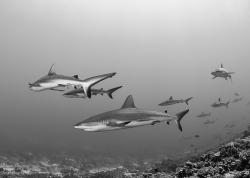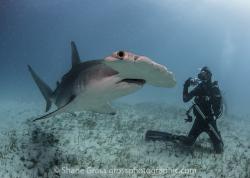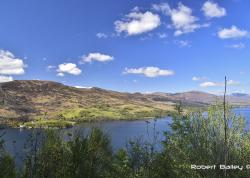Trip Report: Tioman Island
Trip Report: Tioman Island
Underwater photographer Victor Tang revisits his beloved Tioman Island, setting of the film "South Pacific," diving and exploring its remote and extraordinary outer islands
by Victor Tang
Skipping over tires long vulcanized and onto the jetty at Tioman Island is a nostalgic event for me, with flashbacks surfacing and floating happily at the forefront of my memories. It was here, in these waters, where I first took to the fathoms, stirring up sand from my first fin pivot exercise and shuddering at the thought of inhaling the fumes from my saliva within my mask. Here was where it all began. Yes, I have come home.
Tioman Island's Glory and Struggles
Tioman Island’s natural beauty was brought to the world's attention half a century ago, it's white sand beaches depicted as Bali Hai in the 1958 film South Pacific. After that, glowing endorsement from Jacques Cousteau and accolades from Time Magazine describing it as one of the most beautiful islands on the planet have served to affirm its reputation. Then it was only a matter of time till travelers flocked to the island to bathe in the sun and revel in its lush underwater environment.
Unfortunately, conservation and sustainable development were foreign concepts to the authorities as Tioman Island began to grow in popularity, and the degradation of its natural beauty was inevitable. Even though Tioman and its surrounding islands were gazetted as a Marine Park in 1996, controversial development projects are still being approved. Contrary to what one might think, it is actually easier to reach Tioman Island from Singapore than it is from Kuala Lumpur, making Tioman the scuba certification factory for new divers from Singapore. Being the only easy place for divers and snorkelers to get to from Singapore, you can imagine the immense pressure put on the reefs every weekend.
Dive sites close to the western shore of Tioman, such as the famed Renggis and Soyak Islands, are easily accessible with little to no currents most of the time. Less experienced and newly minted divers swamp to these places, so these sites are badly over-dived. Economic interests ensure that efforts to close off these sites for regeneration are promptly repealed.
However, if we turn our attention to the offshore islands northwest of Tioman, a different story emerges. The submerged reefs around these islands are exposed to the prevailing ocean currents, so these dive sites are only suitable for experienced divers. Some of the sites are so difficult to access that they have attained somewhat of a legendary status among visitors, making it a rarity to encounter people who have actually dived these sites before. For those who try, if you time the dives wrongly you'll wish you had brought along a bigger surface marker buoy. I came up to Tioman with a group of experienced divers and a dive center with the experience and willingness to take us there, so this was a very unique opportunity to visit these sites.
Chebeh Island
At the most northern tip of the Tioman Island Marine Park lies Chebeh Island, an outcrop of boulder formations that hints at the area’s volcanic past. The boulder formations extend down through the depths, and upon descending the diver will notice the lushness of the coral cover among the rocks. Swathes of soft coral gardens drape across the landscape, with some of the biggest feather starts I have even seen dotting the reef. Gaps between the boulders seem clogged with gorgonian sea fans in a multitude of colors, forming an impenetrable wall that compels you to stop and admire its beauty.

Beautiful reef scape among the volcanic rock. F7.1 and 1/60s at ISO 80.

Sea fans competing for space. f8 and 1/60s at ISO 80.
Fish life on Chebeh Island was decent. I was greeted by a blanket of Gold-Band Fusiliers upon descending, with schools of Big-Eye Snappers hiding among the rocks. Macro opportunities are restricted to nudibranchs, with “common” species such as Phyllidiella Lizae, Pteraeolidia Ianthina and Jorunna Funebris spotted.

Big-eye Snappers. F7.1 and 1/60s at ISO 80.

This Jorunna funebris was big enough for my fisheye lens. F8 and 1/220s at ISO 80.
Fan Canyon
This dive site on the eastern side of Tulai Island is so named because of the huge gorgonian sea fans that can be found here, especially in a narrow ravine that is chocked full of them. Next to the ravine is a wide plateau that could be more aptly named as a whip coral forest, the majority of the whip corals I estimate to be at least 4cm across and 2 meters high, making for a dramatic reef scape. Nudibranchs love to hide amongst the rocky bottom, the divers spotting Chromodoris quadricolor, Nembrotha kubaryana, Chromodoris leopardus and Phyllidiopsis krempfi. In fact, Phyllidiopsis krempf is so ubiquitous in Tioman Island waters that it has been given the nickname “expendable nudi.”

Huge sea fans dot the site. F8 and 1/80 at ISO 80.

Diver admiring glass fish. F7.1 and 1/60s at ISO 80.
Cuttlefish are known to roam amongst the whip corals here and they did not disappoint when a pair of pretty sizable ones made an appearance.

A cephalopodic greeting. F8 and 1/100s at ISO 80.

Nice of the cuttlefish to stay still. F8 and 1/50s at ISO 80.
Magician Rock
This is the holy grail of dive sites around Tioman Island because it is so rarely ventured into. An underwater pinnacle in the middle of the ocean, currents here can be unpredictable and strong, so knowing the exact window to visit this is absolutely crucial to having an enjoyable dive. Negative experiences are the norm here, and an experienced boat captain is needed to place the divers up current when the tides are moving.

Can you spot the nudi? F8 and 1/250s at ISO 80.

A place rarely admired. F8 and 1/100s at ISO 80.
If you do manage to get to the site you will be rewarded with a pristine reef rich in marine life. As we descended through a blanket of Gold Band Fusilliers, huge mounts of hard coral up to 6 meters high beckoned for us to take a closer look. Mounts like this dot the reef scape, making for an impressive panorama. Numerous schools of hundreds of Big-Eye Snappers can be seen flitting between the coral mounts with Robust Fusiliers and the odd Trevally teasing you as they zoom by. Needlefish and Halfbeaks patrol at the top of the reef, waiting for a feeding opportunity. We saw a school of about twenty enormous Batfish loom into view and soon it became apparent that the site is a bustling cleaning station. Considering Magician Rock’s location, one can’t help but wonder what other pelagic species come here for a pit stop from time to time.

Batfish awaiting for turn to be cleaned. F8 and 1/50s at ISO 80.

Many opportunities to shoot schooling fishes. F7.1 and 1/60s at ISO 80.
KM Sipadan Wreck
Just a week before our arrival the Royal Malaysian Navy warship KM Sipadan was sunk to create an artificial reef, complementing two Thai fish boats at the dive site Sawadee Wrecks. Sitting thirty-one meters long and resting upright thirty meters deep, exploring a wreck this new was a surreal experience. You can still create your own whirlpool by cranking the flush lever at the captain’s toilet!

Spanking new wreck! F8 and 1/60s at ISO160.

Not many marine creatures have explored these walkways. F8 and 1/60s at ISO160.
Tiger Reef
Tiger Reef is another of Tioman Island’s submerged reefs that is rarely dived due to strong currents. Located in the channel between Sepoi and Labas Islands, this was the dive that I chose to try out the new Canon S100 camera. Tiger Reef reputedly has some of the most pristine reefs in Tioman Island Marine Park, and it did not disappoint. A whole array of soft corals compete for berthing space on the volcanic rocks, accentuated by the most well-preserved gorgonians I have found anywhere around Tioman Island.

Photo opportunities aplently. f8 and 1/100s at ISO 200.

Barrel Sponge. F8 and 1/60s at ISO 200.
Fish life is truly prolific here, with the usual suspects like schools of Fusiliers and Rainbow Runners seemingly always around the corner. The Rainbow Runners were in a mood to feed, thus we were able to observe some hunting action. A two-meter Giant Barracuda decided to grace us with an appearance but always kept an aloof distance, frustrating our best efforts for a decent shot. The nudibranchs were out in force today, with sightings of Pteraeolidia ianthina, Hypselodoris apolegma, Phyllidia varicosa and Nembrotha chanberlaini among the dense coral cover.

One irritating Giant Barracuda. F8 and 1/80s at ISO 200.

Most sea fans are still beautifully intact. F8 and 1/60s at ISO 200.
There was never a dull moment during this dive with plentiful photo opportunities. Tiger Reef was certainly the most exciting dive on this trip.
Labas Island
A series of rocky outcrop makes up Labas Island, and below the waves are a whole myriad of swim-throughs that can offer some surprises if you look closely. Coral cover is decent here, with the best being found in the nooks and crannies. Schools of Big-Eye Snappers seek refuge among the crevices and again nudibranchs take center stage when scouting for macro opportunities. Coming out of a swim-through we ran right smack into a school of about fifty Yellowtail Barracuda, so we spent the rest of the dive photographing them.

Unique coral formations, F8 and 1/160s at ISO 160.

Catching the Barracuda train. F8 and 1/250 at ISO 80.

Into the abyss. F8 and 1/125s at ISO 160.
Many divers express disappointment with Tioman Island, but how many have really seen it in its full glory? The outer islands are a must. These dive sites are best dived from March to August, and it is helpful if you can tag along with a big enough group of experienced divers so that dive centers will be more comfortable bringing you to these sites. All is not lost for Tioman Island, just point the captain where to go.
About The Author
Victor Tang runs a small dive travel company, Wodepigu Water Pixel, that in addition to the usual places like Manado and Bali endeavours to bring divers to some of the more exotic and harder to reach dive locations in Southeast Asia.
Further Reading
Support the Underwater Photography Guide
Please support the Underwater Photography Guide by purchasing your underwater photography gear through our sister site, Bluewater Photo and Video. Click, or call them at (310) 633-5052 for expert advice!
RECOMMENDED ARTICLES
SUPPORT THE UNDERWATER PHOTOGRAPHY GUIDE:
The Best Service & Prices on u/w Photo Gear
 Visit Bluewater Photo & Video for all your underwater photography and video gear. Click, or call the team at (310) 633-5052 for expert advice!
Visit Bluewater Photo & Video for all your underwater photography and video gear. Click, or call the team at (310) 633-5052 for expert advice!
The Best Pricing, Service & Expert Advice to Book your Dive Trips
 Bluewater Travel is your full-service scuba travel agency. Let our expert advisers plan and book your next dive vacation. Run by divers, for divers.
Bluewater Travel is your full-service scuba travel agency. Let our expert advisers plan and book your next dive vacation. Run by divers, for divers.
































